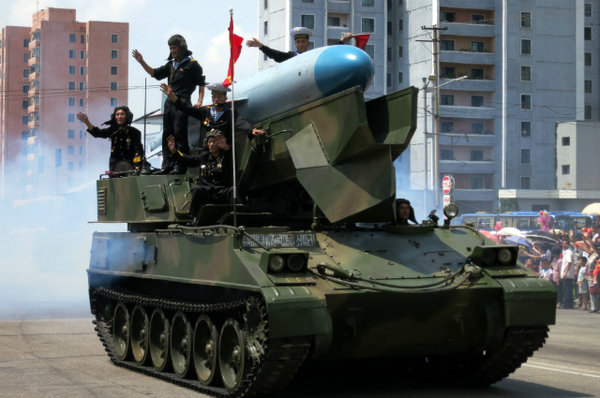No one can intercept Kim Jong-un's invincible ballistic missiles
Pyongyang has fired two ballistic missiles that flew over the territory of Japan. Why doesn't Tokyo intercept them? Officials say that the missiles are not dangerous, but their words do not sound convincing. It would be an excellent propaganda move and an action to intimidate Kim.

Unconvincing excuses
On August 29 and September 15, Pyongyang conducted two launches of Hwasong-12 ballistic missiles. They flew over the territory of Japan and fell in the Pacific Ocean about 2,000 kilometres far from Cape Erimo in Hokkaido. Bellicose statements from Pentagon chief James Mattis who said that the US would shoot down DPRK ballistic missiles even if they did not pose a threat to the territory of the United States, seem to have been forgotten.
The Japanese look confused. Chief secretary of the Japanese cabinet, Yoshihide Suga, said: "We did not intercept it (the missile), because we did not expect any damage to the Japanese territory." However, this statement looks like a weak attempt to justify inaction. The alarm system worked for the population, and people rushed to basements and shelters. Will people start asking questions to the government after one or two of such alarms?
Why no one intercepts North Korean missile launches
Western experts tried to explain it. Nuclear weapons expert Joe Cirincione told Defense One that when flying over Japan, the missile flies through space at an altitude of 770 kilometres. The Patriot-PAK3 complex, which is located on the island in Hokkaido, is designed only to strike warheads as they approach the target. The expert believes that one could try to neutralise the North Korean missile when it blasts off, but one would have to use sea-based Aegis systems for it, and they would need to approach the coast of North Korean very close. Even in this case, anti-missiles would only have a minute or two for a successful operation.
Tokyo-based arms expert Lance Gatling of Nexial Research shares the same point of view. The missile was flying above Japan at a very high altitude and at a very high speed. At an altitude of about 550 kilometres above Hokkaido, the missile was barely within reach of the SM-3 (Japanese naval interceptors - ed.) As for the Aegis system, it was supposed to be in a particular place at a particular time to be able to shoot the North Korean missile down, the expert told Deutsche Welle.
The Americans have the ground-based Midcourse Defense complex to protect the continental part of the USA. The system is capable of striking missiles in space. However, the system struck only a half of targets during trials. Eventually, there was an obvious explanation made: space is not affiliated with any country under international law.
Even though launching a missile over the territory of another country is an unfriendly and illegal gesture, but consequences of unsuccessful interception would be immense, Gatling believes. Tokyo had invested heavily in the development of its missile defence system. The Japanese exclude an unsuccessful operation at this point, which would make North Korea believe even more in the invulnerability of their missiles.
If the Americans launched Aegis interceptor missiles to destroy North Korean missiles during takeoff, they could fly toward the Russian territory and would need to be intercepted over Russian territorial waters, Russian experts suggested.
"This is an unprofessional point of view version," Konstantin Sivkov, a corresponding member of the Russian Academy of Missile and Artillery Sciences, told Pravda.Ru. The general course of the flight of the antimissile would be directed from the territory of Russia rather than towards it, because an antimissile follows a ballistic missile, he explained.
"The speed of the Aegis Standard-3 interceptor missile is about four kilometres per second. The starting Korean missile gains the same speed literally within several seconds. North Korean missiles blast off from the central part of the peninsula. Thus, the Aegis system would need to detect the fact of the launch of those missiles and then pursue them. For this purpose, one needs to bring an Aegis system at a distance of not more than 50-100 kilometres to the prospective target," Konstantin Sivkov said.
As we can see, Kim Jong Un does not risk anything when he launches his missiles. He will continue doing so until someone either strikes a preemptive blow on Pyongyang or sits down to negotiate with Kim. Economic sanctions will not help, because the North Koreans have been living under the conditions of international isolation for long.
Lyuba Stepushova (Lulko)
Pravda.Ru
Read article on the Russian version of Pravda.Ru
Subscribe to Pravda.Ru Telegram channel, Facebook, RSS!


